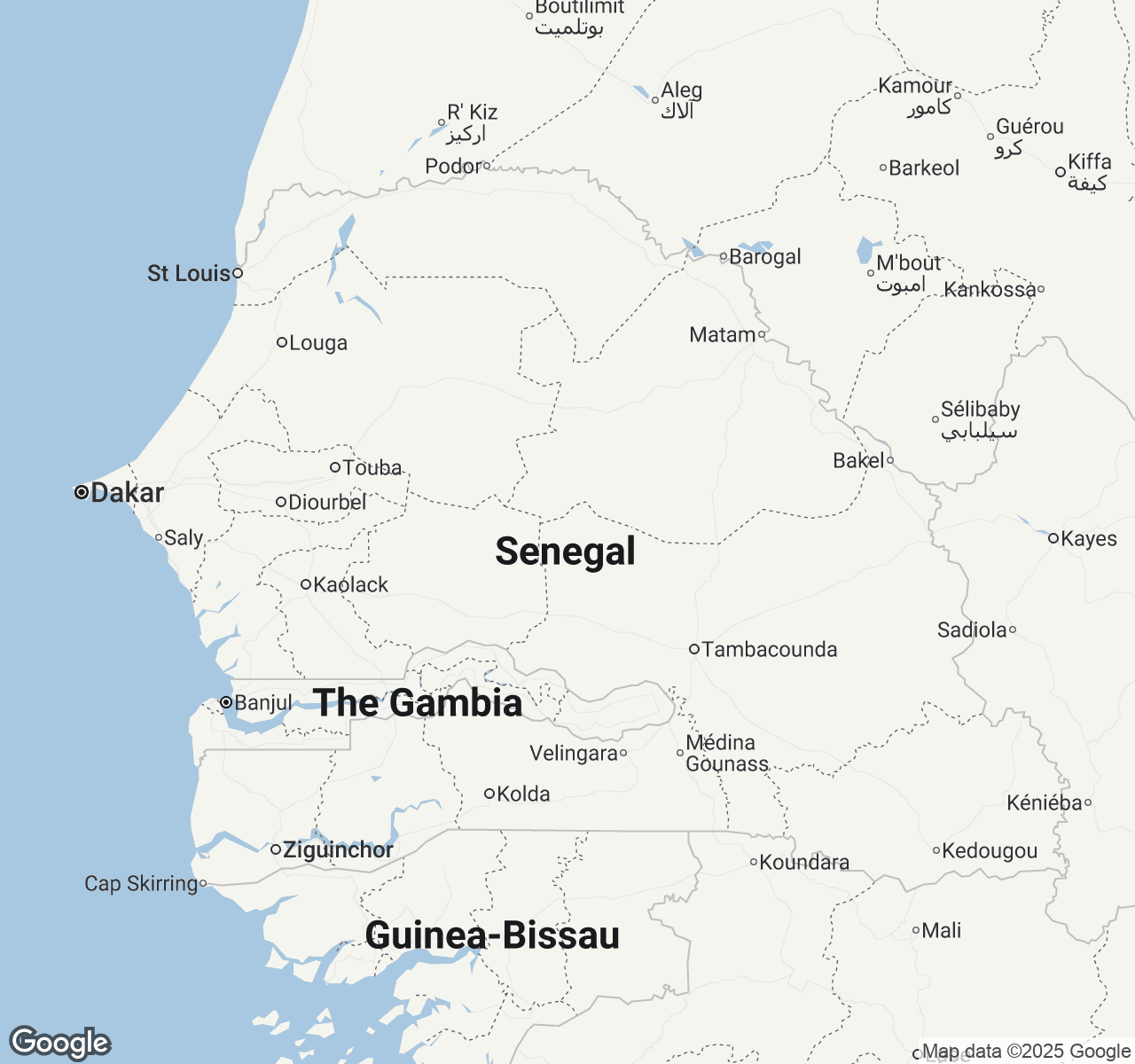
Things to Do in Senegal
Discover the best of Senegal
Plan Your Trip
Essential guides for timing and budgeting
Top Things to Do in Senegal
Discover the best activities and experiences. Book now with our trusted partners and enjoy hassle-free adventures.
Explore Destinations in Senegal
Your Guide to Senegal
About Senegal
Senegal pulses with the rhythms of sabar drums and the warmth of teranga—the Wolof word for hospitality that defines the very soul of this West African jewel. From the colonial elegance of Dakar's Plateau district to the mystical baobab groves of the Sine-Saloum Delta, Senegal weaves together French sophistication and deep African traditions into an intoxicating tapestry. The country's coastline stretches like a golden ribbon along the Atlantic, where colorful pirogues bob in turquoise waters and fishermen's nets dry in the Saharan breeze. Island sanctuaries like Gorée whisper stories of resilience and remembrance, while the pink waters of Lac Rose shimmer under endless skies. In bustling markets, the air thrums with polyglot conversations—French, Wolof, Pulaar, and Serer creating a linguistic symphony. Every sunset brings the call to prayer floating over terracotta rooftops, while griots' kora melodies drift from open doorways, carrying centuries-old stories into the star-studded night.
Travel Tips
Transportation: Use official taxis with meters in Dakar or negotiate fares upfront. For intercity travel, sept-places (shared taxis) are cheapest but crowded—book two seats for comfort. Avoid driving at night due to poor road lighting and livestock.
Money: Carry West African CFA francs in cash as cards aren't widely accepted outside Dakar. Use Ecobank or BICIS ATMs for best rates. Budget 15,000-25,000 CFA daily for mid-range travel including meals and transport.
Cultural Respect: Dress modestly, especially when visiting mosques—cover shoulders and knees. Always greet with 'As-salaam alaikum' or 'Bonjour' before conversations. Accept tea invitations graciously; refusing is considered rude. Remove shoes when entering homes.
Food Safety: Stick to busy street food stalls with high turnover and hot, freshly cooked meals. Try thieboudienne (national dish) and fresh grilled fish. Avoid raw vegetables unless you can peel them. Drink bottled or filtered water exclusively.
When to Visit
Senegal's dry season (November-May) offers the most comfortable travel conditions with temperatures ranging from 70-85°F and virtually no rainfall. December through February represents peak season with perfect weather but 30-40% higher accommodation prices and crowded attractions. March-May brings hotter temperatures (85-95°F) but fewer crowds and 20% lower prices, ideal for budget travelers who can handle heat. The wet season (June-October) sees heavy rainfall (up to 20 inches in August), high humidity, and temperatures around 80-90°F. However, this period offers the lowest prices (40-50% discounts) and lush, green landscapes—perfect for photographers and cultural enthusiasts willing to work around afternoon downpours. Major festivals include Tabaski (Eid al-Adha, dates vary), the Saint-Louis Jazz Festival (May), and Dakar Music Festival (December). Birdwatchers should visit November-April when Palearctic migrants join resident species. Surfers find best swells December-April, while fishing enthusiasts prefer the calmer May-October period. First-time visitors should target December-February for optimal weather, while repeat visitors might explore the atmospheric wet season for authentic local experiences and significant savings.

Senegal location map